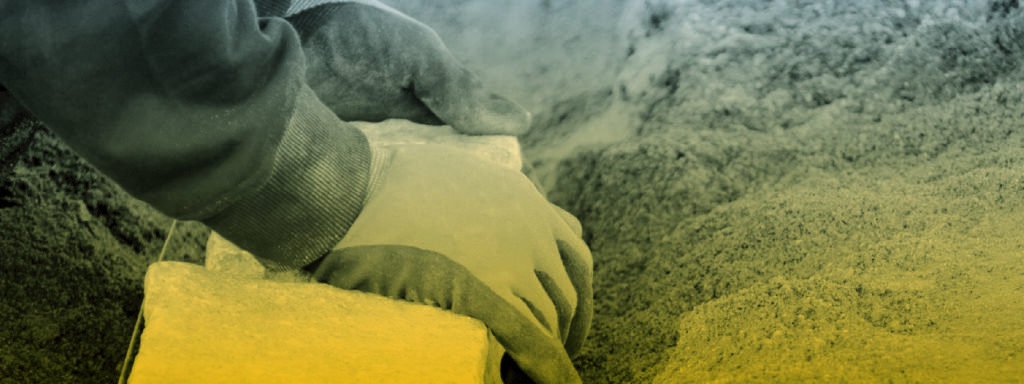
Polycor U
Geotechnical Fabrics
There are a few types of geotechnical fabrics, non woven, woven and biaxial. Learn the difference between these three and how to properly install them.
Existen algunos tipos de telas geotécnicas: no tejidas, tejidas y biaxiales. Aprende la diferencia entre estas tres y cómo instalarlas correctamente
Geotechnical Fabric Installation – Maintaining System Integrity
Once you’ve achieved proper soil compaction, installing geotechnical fabric over the compacted subgrade ensures that the soil layer and base layer remain separate throughout the life of your installation. This separation maintains the strength and integrity of both layers while preventing the intermixing that can compromise the performance of the entire paver system. Understanding the different types of geotechnical fabrics and their appropriate applications helps ensure optimal performance based on your specific regional climate conditions and project requirements.
Several types of geotechnical fabrics are available, each designed for specific applications and performance requirements. The fabric choice depends significantly on regional climate conditions, soil types, expected loads, and the specific paving application being installed.
Nonwoven geotechnical fabric resembles felt in appearance and texture while offering various strength ratings to match different project requirements. This fabric type is typically used as a separator for paving applications and should meet minimum specifications of 4-ounce weight or 70-100 thread count per inch for adequate performance in standard hardscape applications.
Nonwoven fabrics work through filtration and separation, allowing water to pass through while preventing fine soil particles from migrating upward into the base layer. This separation function is critical for maintaining base integrity over time, as fine particle migration can gradually weaken the base and compromise load-bearing capacity.
Woven geotechnical fabric offers excellent soil separation capabilities combined with superior bilateral tension strength. This tension ability means the fabric maintains tightness and structural integrity even as the underlying soil subgrade experiences minor settling over time. The tension characteristics help maintain base layer integrity by preventing localized base depression or displacement that could affect paver performance.
Woven fabrics typically provide higher strength ratings than nonwoven alternatives, making them suitable for heavier load applications or challenging soil conditions where additional reinforcement benefits the installation.
Biaxial geotechnical fabric combines the separation and filtration properties of nonwoven and woven fabrics while adding structural reinforcement that can actually maintain or increase pavement strength. This premium fabric option provides the most comprehensive performance characteristics available.
While biaxial fabric costs more than standard alternatives, it proves worthwhile for installations over weaker soils, in wet climate conditions, in areas with harsh seasonal weather, or for projects supporting heavy loads such as driveways or commercial applications. The additional expense often proves justified by improved long-term performance and reduced maintenance requirements.
Proper installation technique maximizes fabric performance while minimizing installation time and material costs. Planning fabric layout to reduce overlap requirements helps control costs while simplifying installation. When ordering fabric, specify roll widths that match your project dimensions to minimize cutting and waste while reducing installation time.
When overlapping fabric sections is necessary, proper overlap orientation prevents fabric displacement during base installation and service life. Position fabric sections so the piece installed on higher ground overlaps the lower piece, allowing water to flow over the joint without lifting or displacing the fabric.
Overlap requirements vary based on soil and climate conditions. Sand-based soils with good drainage typically require only 12-inch overlaps for adequate performance. Clay-based soils in humid conditions benefit from 24-inch overlaps that provide additional insurance against separation or displacement.
The fabric must be installed tightly without wrinkles or loose areas that could create weak spots or allow soil migration. Wrinkles concentrate stress and can tear during base installation, compromising the separation function. Tight installation also prevents fabric displacement during construction activities.
Wrap fabric up against the sides of the excavated area to ensure complete separation between subgrade and base materials. This edge treatment prevents soil contamination of the base along the perimeter where loads concentrate during construction and service.
Securing fabric properly during installation prevents displacement while base materials are placed and compacted. Use aggregate piles or landscape spikes to hold fabric in position, ensuring that securing methods don’t damage the fabric or create weak points.
Landscape spikes work well in most soil conditions and can be driven through the fabric into the subgrade without causing significant damage. Place spikes frequently enough to prevent wind displacement but avoid over-penetrating the fabric.
Aggregate piles provide temporary securing while base placement begins, with the weight of base materials providing permanent securing as installation progresses. This method works particularly well for large installations where spike installation would be time-consuming.
Remember that geotechnical fabric installation represents a critical step in maintaining system integrity. The fabric serves as insurance against soil contamination of the base layer, which could gradually compromise performance over years of service. While fabric represents a relatively small cost in the overall project budget, its contribution to long-term performance makes it an essential component of quality installations.
Your paver system is only as strong as its weakest component, and proper fabric installation helps ensure that soil-base separation doesn’t become the limiting factor in system performance. Taking time to install fabric correctly demonstrates attention to detail while providing the foundation for years of trouble-free service from your paver installation.


